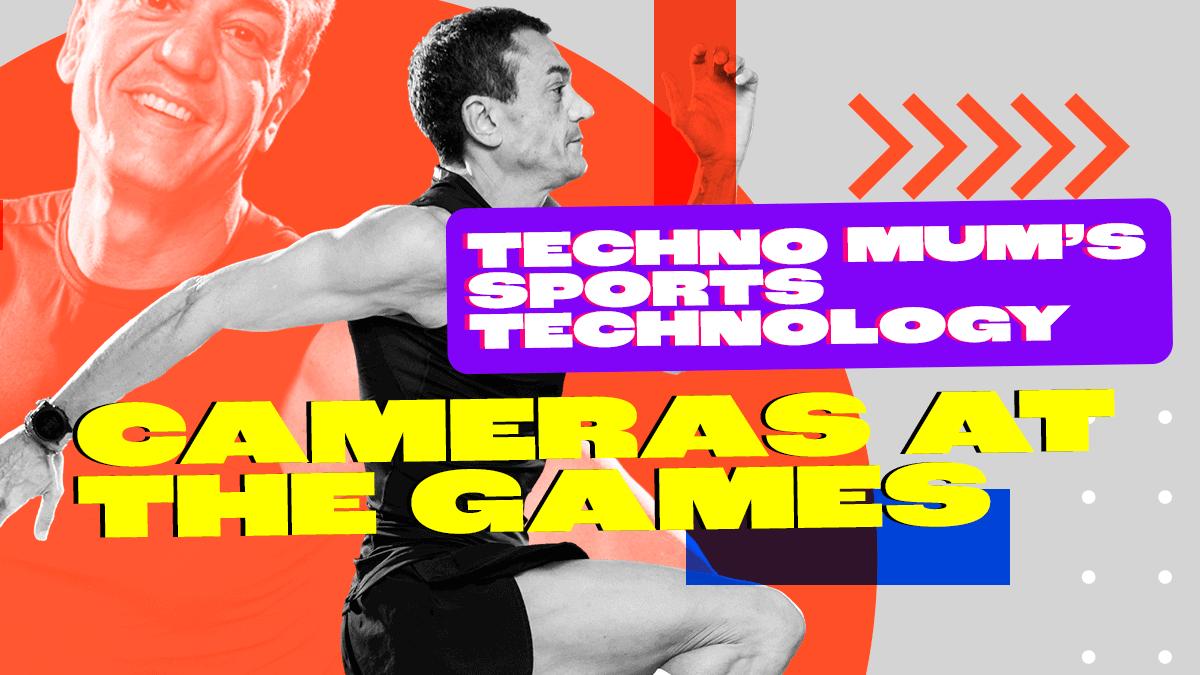There are a range of different high spec cameras helping capture every moment of the action, and each different event has different cameras on the job. For example – diving is an exciting sport to watch as the action moves from the high diving board to the bottom of the pool.
So how do they do it?
Fortunately the camera operator doesn’t have to dive too!. They’ll be on dry land operating the camera remotely. The technology they are using is called a Dive Cam and it steadily films each diver’s motion in free fall.
Underwater cameras do exist of course – you can buy them to take on your holidays, but Dive Cam isn’t getting wet. it’s moving up and down inside a 50ft tube above and below water level, and films each diver in smooth, linear motion. Because of the way gravity works, the camera is always in line with the diver.

Over and under the action
Dive Cams are just one clever type of camera seen at sporting events. Cameras can be set up on rails or wires. For shots from above, there’s the Fly Cam and for underwater events like swimming you’ve got the Mobi Cam – which is a bit like a submarine on a rail.
Movies
The technology behind some of the cameras has a rather odd link with the movies. There’s a famous movie called Rocky about a boxer with an iconic scene set in New York. As the boxer jogs through the streets and up those steps, the camera’s following him all the way, smoothly – in a way it couldn’t if it was fixed to the floor.
So Is it on wires or rails? No! It’s being carried by a camera operator but the reason it’s not jiggling around is because it’s a Steadi-Cam. It uses physics to isolate the movement of the camera operator from the position of the camera to stay steady however much the operator moves.

And it was the inventor of the Steadi-Cam, a man called Garrett Brown who went on to invent many of the video camera systems we’ve been finding out about – the Dive Cam, Fly Cam and Mobi Cam. Steadi-cams are also used at sports events to capture the action from the ground.
Just some of Garrett Browns Inventions
- Equipois: A mechanical arm for heavy equipment.
- FlyCam: A closed loop, stabilized tracking camera system.
- DiveCam: The first dropping vertical camera system.
- GoCam: The ultra-light high speed camera tracking system.
- MobyCam: The first submarine tracking camera system.
- SkyCam: The first suspended flying camera system.
- Steadicam: The original handheld stabilizing system.
- Steadicam Merlin: Next generation hand held Steadicam system.
- Steadicam Tango: A new Steadicam accessory for floor-to-ceiling boom range.
- SuperFlyCam: An ultralight stabilized 35mm wire-borne flying camera.
- Zeen: Elevating walker.
Drones
A drone is “an unmanned aerial vehicle or uncrewed aerial vehicle, without any human pilot, crew or passengers on board. UAVs are a component of an unmanned aircraft system, which include additionally a ground-based controller” Although they’re used for all sorts of things from the military to agriculture – They’re also really fun toys!

And for sporting events they can get spectacular views from high above, or following the action at lightning speeds. They’re also used for stunning displays at opening ceremonies, such as the 2018 Winter Olympics in South Korea – using so many drones that it broke world records!
When did we first see the action on screen?
The 1948 Olympic Games were held in Wembley and the BBC televised them for the first time. The BBC provided facilities for the broadcasters of the 61 competing nations, so they could be seen and heard around the world.
The BBC screened over 50 hours of television during the two weeks of the Games. Writing in the Radio Times, OB Manager Ian Orr-Ewing was worried that people were watching too much – not wanting to miss a minute. He said:
“It is hoped that this habit will not persist during the period of the Olympic Games or viewers will be easily recognised in the streets of London by their pallid appearance!”
Action scenes were much clearer with the use of advanced Emitron cameras. Although there were only about 100,000 televisions in the country – mostly in London – it showed the potential of television to bring sporting events to large audiences.
When the Olympics returned to London in 2012, the BBC covered all the events and 51.9 million people – 90% of the population – tuned in.
Embed from Getty ImagesFor more information visit The IET.








